Wisconsin state (USA)
Location
Wisconsin is located in the northeastern part of the central United States, within the Midwest region. It shares borders with four states: Minnesota to the west, Iowa to the southwest, Illinois to the south, and Michigan to the southeast. Additionally, its eastern border is washed by Lake Michigan, while its northern border is defined by Lake Superior. Wisconsin covers a total area of approximately 169,640 km², making it the 23rd largest state in the United States.
The state capital is Madison, known for its university and vibrant cultural scene. The largest city is Milwaukee, an important industrial and cultural hub. Other notable cities in Wisconsin include Green Bay (famous for the “Green Bay Packers” football team), Racine, and Kenosha.
Wisconsin’s rivers and lakes play a significant role in its geography and economy. Major waterways include the Mississippi River, the Wisconsin River, and the Fox River. Lake Superior and Lake Michigan are not only natural borders but also valuable resources for fishing, shipping, and tourism.
Wisconsin’s landscape ranges from rolling plains in the central region to dense forests in the north. The southern part of the state is dominated by agricultural lands. This diverse terrain provides residents and visitors with numerous recreational opportunities, including hiking, camping, fishing, and water sports.
What Else to Know About Living in Wisconsin and for Newcomers
Wisconsin is a state with a unique atmosphere, traditions, and characteristics that everyone planning to live here should consider. One of the most notable features of the state is its title as “America’s Dairyland.” Locals take great pride in their cheese, which is an integral part of Wisconsin culture. Almost every restaurant offers dishes with cheese sauce, even if it’s not listed on the menu. An interesting fact: Wisconsin has a law that prohibits serving margarine in public places unless specifically requested.
Sports, especially American football, play a significant role in the life of the state. The Green Bay Packers are a true legend, and games at Lambeau Field stadium attract not only locals but also fans from around the world. Buying a ticket to a game can be a challenge, as season passes are often passed down through generations.
Alcohol culture in Wisconsin is fairly liberal. Alcoholic beverages are sold in supermarkets, and many bars have long-standing traditions. However, this is paired with strict traffic laws: driving under the influence is severely penalized with hefty fines and sometimes license revocation.
Fishing is one of the state’s unique traditions and is more than just a hobby for many residents. It’s a family activity passed down from generation to generation. A fishing license is required, but it’s easy to obtain online. Wisconsin is also known for its festivals dedicated to cheese and local produce. These events allow people to enjoy a variety of flavors and experience the warmth of the local community.
To live comfortably in Wisconsin, it’s essential to consider the climate. Winters here are snowy and cold, so it’s important to prepare in advance by investing in warm clothing and winter tires. Residents are accustomed to these conditions and even embrace them by organizing winter festivals and enjoying winter sports.
Another distinctive feature of Wisconsin is its focus on ecology. Local residents actively participate in community initiatives such as land cleanups, tree planting, and waste sorting. These efforts are supported by the government, helping to preserve the state’s natural beauty.
When moving to Wisconsin, be ready for a warm welcome. Locals are always willing to help and support newcomers. Participating in local events and fairs is a great way to integrate and familiarize yourself with the culture of this unique state.
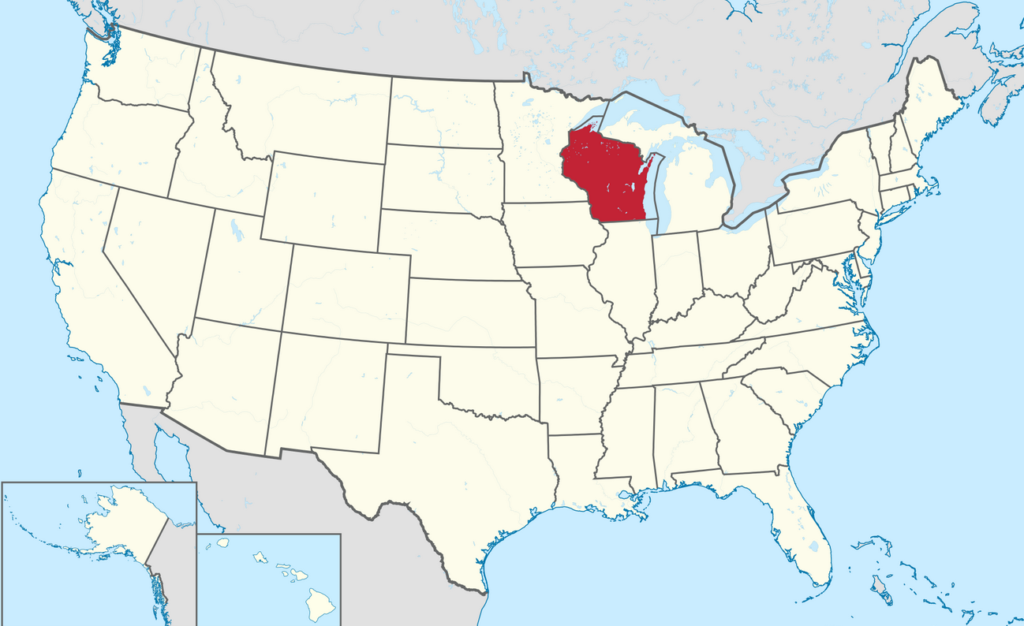
Climate and Landscape
Wisconsin has a temperate climate with distinct four seasons. The summer months, particularly June, July, and August, are warm and humid, with average temperatures ranging from +20°C to +28°C. The winter period, lasting from December to February, can see temperatures drop to -15°C, and even lower in some regions. Snowy winters are common, especially in the northern parts of the state.
Spring and autumn bring cool and pleasant weather to Wisconsin. Autumn, in particular, showcases the state’s forests in stunning colors, transitioning from bright yellow to deep red, creating ideal conditions for hiking and photography. This season is often regarded as one of the best for visitors.
The state’s climate is heavily influenced by the Great Lakes, especially Lake Michigan, which causes localized weather phenomena like lake-effect snow. This occurs when cold air masses move over warmer lake waters, intensifying snowfall in coastal areas.
Wisconsin’s landscape features a combination of plains, hills, dense forests, and numerous bodies of water. The northern part of the state is known for its boreal forests and rocky formations. The central region consists of fertile plains, ideal for agriculture. In the southern part, the Driftless Area stands out with its unglaciated terrain, featuring steep valleys, high hills, and karst caves.
Nature enthusiasts will enjoy Wisconsin’s over 15,000 lakes and numerous rivers, providing excellent opportunities for fishing, boating, and water sports. Lake Superior, in particular, captivates with its grandeur and natural beauty.
Population
Wisconsin has a population of approximately 5.9 million people (based on the latest census). This makes it the 20th most populous state in the United States. The population density is about 41 people per square kilometer, indicating a moderate level of settlement compared to other states.
Population Distribution by Cities
Milwaukee, the largest city in the state, is home to over 570,000 people, with its metropolitan area hosting around 1.5 million residents. It serves as Wisconsin’s primary economic and cultural hub. The capital city, Madison, the second-largest city, has over 270,000 residents and is renowned for its university, innovative startups, and high quality of life. Other significant cities include:
- Green Bay (about 110,000) — a center of professional American football, known for the “Green Bay Packers” team.
- Racine (approximately 77,000) — an industrial city located on the shores of Lake Michigan.
- Kenosha (around 100,000) — a fast-growing city on the border with Illinois, benefiting from proximity to Chicago.
Racial Composition
Wisconsin is predominantly a white state, but its ethnic diversity is growing:
- White population — about 80%.
- African Americans — 7%, primarily concentrated in larger cities, especially Milwaukee.
- Latinos — 7%, with a growing share of immigrants from Mexico and Central America.
- Asians — 3%, including a significant Hmong community that emigrated after the Vietnam War.
- Other ethnic groups — 3%, including Native Americans.
Ukrainian Diaspora in Wisconsin
The Ukrainian community in Wisconsin is smaller than in states like New York or Illinois but is actively growing. The largest concentrations of Ukrainians are in Milwaukee, Madison, and Green Bay. According to recent estimates, around 15,000 people of Ukrainian descent live in the state.
Ukrainians in Wisconsin have established several cultural and religious centers that unite the community. The most notable include:
- Ukrainian churches in Milwaukee, which regularly host services and cultural events.
- Community organizations that promote Ukrainian culture, organize celebrations, and assist new migrants.
- Ukrainian cultural festivals, held annually and attracting not only Ukrainians but also other state residents.
Today, the Ukrainian community in Wisconsin is active, particularly in educational and cultural spheres. Recent migration waves due to the war in Ukraine have increased the number of newcomers, providing momentum for further community initiatives.
Ukrainians also contribute to the state’s economy, working in construction, healthcare, IT, and other industries. A key element of integration is learning English and connecting with other communities.
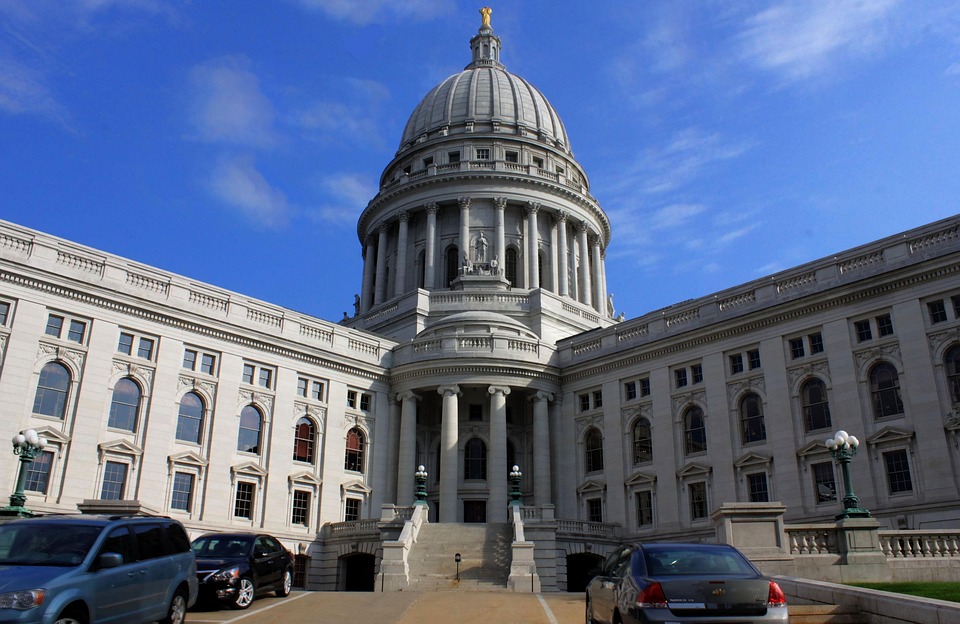
Crime
The crime rate in Wisconsin is moderate compared to other U.S. states. According to official statistics, the violent crime rate is approximately 320 incidents per 100,000 people, which is below the national average. However, crime rates vary significantly depending on the region.
Crime in Cities
Milwaukee has the highest crime rate among Wisconsin cities. Violent crimes, such as assaults, robberies, and shootings, are concentrated mainly in the northern and western parts of the city. Other major cities like Madison and Green Bay have significantly lower crime rates and are considered safer for living and tourism.
Madison, for example, is known for its high quality of life and well-functioning public safety system. Minor offenses, such as burglaries or traffic violations, are more common there.
Factors Influencing Crime
The primary causes of crime in the state include income inequality, poverty in certain areas, and the accessibility of firearms. The state government implements crime prevention programs by investing in education and job creation, particularly in high-risk areas.
Economy
Wisconsin’s economy is characterized by stability and diversification, with key sectors including manufacturing, agriculture, healthcare, and tourism. The state ranks 21st in the U.S. in terms of GDP, with a total output of approximately $400 billion.
Average Wages and Unemployment Rate
The average annual salary in Wisconsin is about $55,000, slightly below the national average of $58,000. The minimum wage in the state is $7.25 per hour, in line with the federal level, though some companies and cities, like Madison, often offer higher pay to attract workers.
The unemployment rate in Wisconsin remains relatively low at around 3.4%, which is below the national average. This is due to the state’s stable economy and high demand for skilled labor.
Key Economic Sectors
- Manufacturing:
Wisconsin is a U.S. leader in manufacturing, especially in machinery, electronics, construction equipment, and food processing. Milwaukee is considered the state’s manufacturing hub. - Agriculture:
The state is renowned for its dairy industry and is often called “America’s Dairyland.” Wisconsin ranks second in the U.S. for cheese production, surpassed only by California. Other major products include corn, soybeans, cranberries, and ginseng. - Healthcare:
The healthcare sector in Wisconsin is growing rapidly, offering numerous job opportunities in hospitals, research centers, and the pharmaceutical industry. - Tourism:
With its natural beauty, cultural events, and lakes, Wisconsin attracts millions of tourists annually. Popular destinations include Lake Superior, Door County, and the water parks in Wisconsin Dells. - Technology and IT:
Cities like Madison are fostering startups in IT, biotechnology, and innovative manufacturing.
Poverty Rate
Despite the state’s overall economic stability, the poverty rate in Wisconsin is approximately 10.5%, which is slightly lower than the national average. Poverty is most prevalent in rural areas and among certain urban communities in Milwaukee.
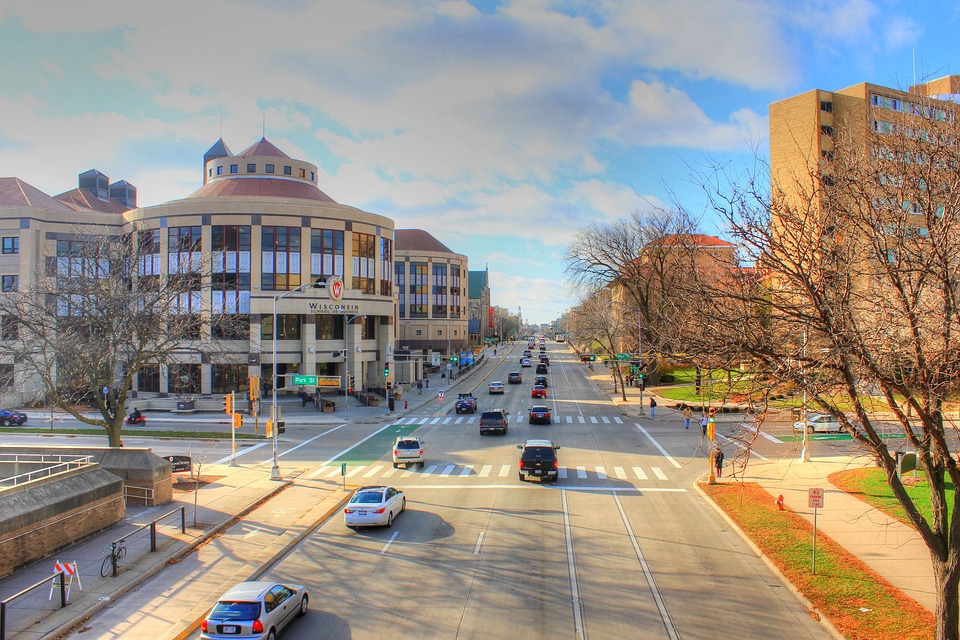
Wisconsin for Business
Wisconsin offers a favorable environment for business due to its diversified economy, skilled workforce, and relatively low costs of living and commercial operations. However, alongside the advantages, there are challenges, risks, and specific considerations that entrepreneurs should be aware of.
Tax Incentives and Benefits
The state actively supports business development through a range of tax incentives and programs. Some of the most notable include:
- Wisconsin Economic Development Corporation (WEDC): Provides tax credits for companies creating new jobs or investing in local infrastructure.
- Manufacturing and Farming Credits: Businesses involved in manufacturing or agriculture benefit from a special tax credit, reducing their tax burden to 0.4%.
- Technology Grants: Startups in IT, biotechnology, and “green” technologies can access subsidies for research and development.
- Investment Incentives: Programs targeting large corporations that establish new production facilities or offices in Wisconsin.
Key Business Risks in Wisconsin
- Seasonal Business Cycles:
Certain industries, such as tourism, agriculture, and construction, are heavily influenced by climate conditions. Harsh winters and a short summer season can limit business activity during specific times of the year. - Tax Burden:
While Wisconsin offers various tax benefits, the overall corporate tax rate is relatively high. The corporate income tax stands at 7.9%, one of the highest in the region. - Workforce Shortages:
Despite having a skilled workforce, specific sectors, such as IT, healthcare, and high-tech manufacturing, often face talent shortages. This creates competition for skilled workers and may increase labor costs. - Infrastructure Challenges:
While major cities like Milwaukee and Madison boast advanced infrastructure, rural areas may lack the quality necessary for large-scale projects. This can impact logistics and product distribution.
Problems Faced by Businesses
- High Energy Costs:
Energy costs in Wisconsin are above the national average, which can pose challenges for energy-intensive industries like manufacturing and logistics. - Competition:
Entrepreneurs in traditional sectors (e.g., dairy production or agriculture) face stiff competition both domestically and internationally.
Real Estate
The real estate market in Wisconsin offers a wide range of options for renting and purchasing, with prices varying significantly depending on the city, neighborhood, and property type. Overall, Wisconsin is known for its affordable prices compared to other U.S. states, making it attractive for families, young professionals, and retirees.
Rental Prices
Renting in Wisconsin is a practical option for those not ready to buy or planning temporary residence. Rental costs depend on location:
- Milwaukee:
- One-bedroom apartment in the city center: $1,100–$1,500 per month.
- One-bedroom apartment outside the center: $850–$1,200 per month.
- Two-bedroom house: $1,500–$2,200 per month.
- Madison:
- One-bedroom apartment in the city center: $1,200–$1,800 per month.
- One-bedroom apartment outside the center: $900–$1,400 per month.
- Three-bedroom house: $1,800–$2,500 per month.
- Green Bay:
- One-bedroom apartment: $700–$1,000 per month.
- Two-bedroom house: $1,200–$1,800 per month.
- Rural Areas:
- One-bedroom apartment: $500–$800 per month.
- House: $1,000–$1,500 per month.
Purchasing Real Estate
Home prices in Wisconsin vary by city and property type. The average cost of homes is around $250,000, which is lower than the U.S. average of $350,000.
- Milwaukee:
- Average home price: $250,000–$400,000.
- Apartments in the city center: starting at $300,000 for 2-bedroom units.
- Madison:
- Average home price: $300,000–$450,000.
- New builds and cottages: $400,000–$600,000.
- Green Bay:
- Average home price: $200,000–$300,000.
- Townhouses and duplexes: $180,000–$250,000.
- Rural Areas:
- Farmhouses or properties with large lots: $180,000–$300,000.
- Land plots: $5,000–$10,000 per acre, depending on location.
Market Features
- Property Taxes:
Property tax in Wisconsin is relatively high, averaging 1.68% of the property’s value, making it one of the highest in the U.S. This should be considered in budgeting. - Buyers’ Market:
Wisconsin is currently in a stable demand phase, creating favorable conditions for buyers, especially in rural areas. - Long-term Rentals:
Long-term rentals are popular among young people and students, particularly in cities with major universities like Madison.
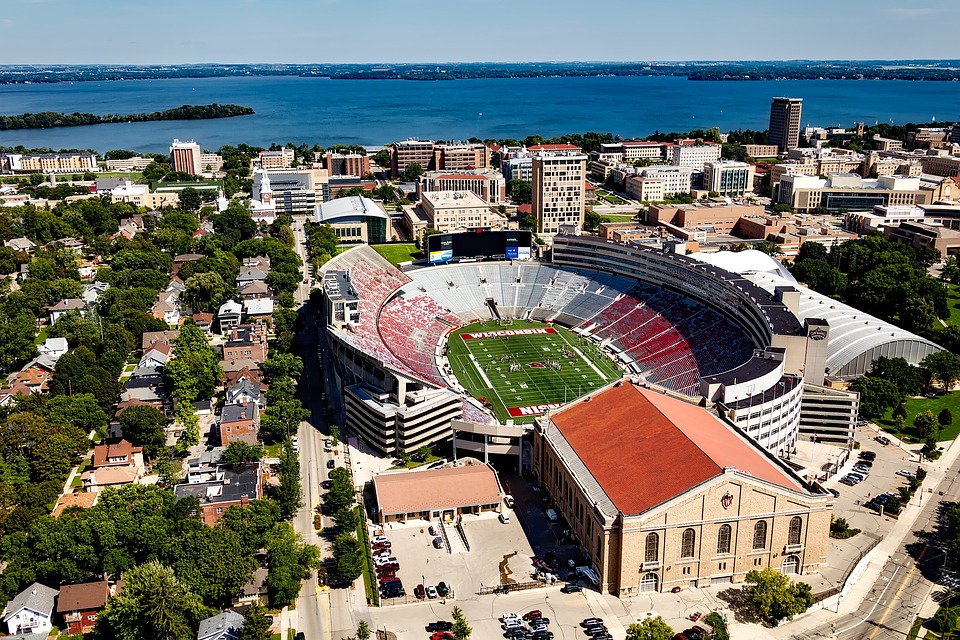
Ecology
The ecological situation in Wisconsin is an essential aspect of life in the state, given its wealth of natural resources such as lakes, forests, and fertile lands. However, like many other regions, Wisconsin faces several environmental challenges, including water and air pollution as well as climate change.
Water pollution is one of the state’s primary ecological concerns, as large-scale agricultural activities result in the runoff of fertilizers and pesticides into rivers and lakes. This leads to algal blooms, a decline in water quality, and harm to aquatic ecosystems. Industrial enterprises, particularly those located near major water resources, also contribute to the issue.
The intensive use of land for agriculture leads to soil erosion and reduced fertility, threatening the sustainable development of Wisconsin’s agricultural sector, a key component of its economy. Air pollution, particularly in major cities like Milwaukee, is associated with emissions from vehicles and industrial facilities. In rural areas, emissions related to livestock farming are a significant source of pollution.
Wisconsin also experiences the effects of climate change, manifesting as more intense rainfall, frequent flooding, and extreme temperatures. These phenomena pose challenges for infrastructure, agriculture, and local ecosystems.
The state is actively addressing these issues through various initiatives. Programs to reduce agricultural runoff and improve water quality are being implemented. The government supports farmers in adopting sustainable farming practices, such as establishing buffer zones around water bodies. Efforts to restore forests and clean up rivers and lakes are also part of the state’s environmental policy.
To combat air pollution, Wisconsin promotes the use of electric vehicles and develops low-emission public transportation. Additionally, infrastructure modernization focuses on adapting to climate change, particularly in mitigating floods and extreme weather conditions.
Local communities play a crucial role in maintaining ecological balance. Residents actively participate in community actions such as land cleanups, tree planting, and educational initiatives. In Wisconsin, preserving nature is a shared goal across all levels of society, contributing to improved quality of life and the protection of the state’s unique resources.
Landmarks in Wisconsin
Wisconsin is rich in natural, historical, and cultural attractions that draw tourists from across the country. Here is a list of the most notable places to visit:
- Lake Superior
The largest freshwater lake in the world by surface area, located in the northern part of the state. Wisconsin’s shoreline offers stunning views, the Apostle Islands’ cliffs, and opportunities for fishing or kayaking. - Apostle Islands National Lakeshore
A group of 21 islands on Lake Superior, known for their sea caves, beaches, and historic lighthouses. In winter, visitors can see unique ice formations. - Door County
A region famous for its orchards, charming towns, and Lake Michigan coastline. It’s a popular destination for biking, hiking, and wine tours. - Milwaukee
The state’s largest city, known for its breweries, the Harley-Davidson Museum, and the annual Summerfest – one of the world’s largest music festivals. - Wisconsin Dells
A city considered the waterpark capital of the U.S. In addition to water attractions, visitors can explore canyons and cliffs on boat tours. - Madison
The state capital, surrounded by beautiful lakes, parks, and the Wisconsin State Capitol, regarded as one of the most stunning in the U.S. The city is renowned for its cultural events and high quality of life. - Devil’s Lake State Park
The most popular park in Wisconsin, featuring a crystal-clear lake surrounded by cliffs. The park offers hiking trails, rock climbing, and camping opportunities. - Green Bay
Home to the famous Green Bay Packers football team and Lambeau Field stadium. The city also has a sports museum and family attractions. - House on the Rock
A unique attraction combining a museum, architectural wonder, and an eclectic collection of antiques. It mesmerizes visitors with its unusual design. - Chequamegon-Nicolet National Forest
A dense forest in northern Wisconsin with numerous hiking trails, camping spots, fishing areas, and opportunities for wildlife watching. - Frank Lloyd Wright’s Taliesin
The historic home of renowned architect Frank Lloyd Wright. This architectural complex showcases masterpieces of organic architecture. - Lake Michigan
Wisconsin’s coastline offers sandy beaches, yacht harbors, and a variety of water recreation activities.
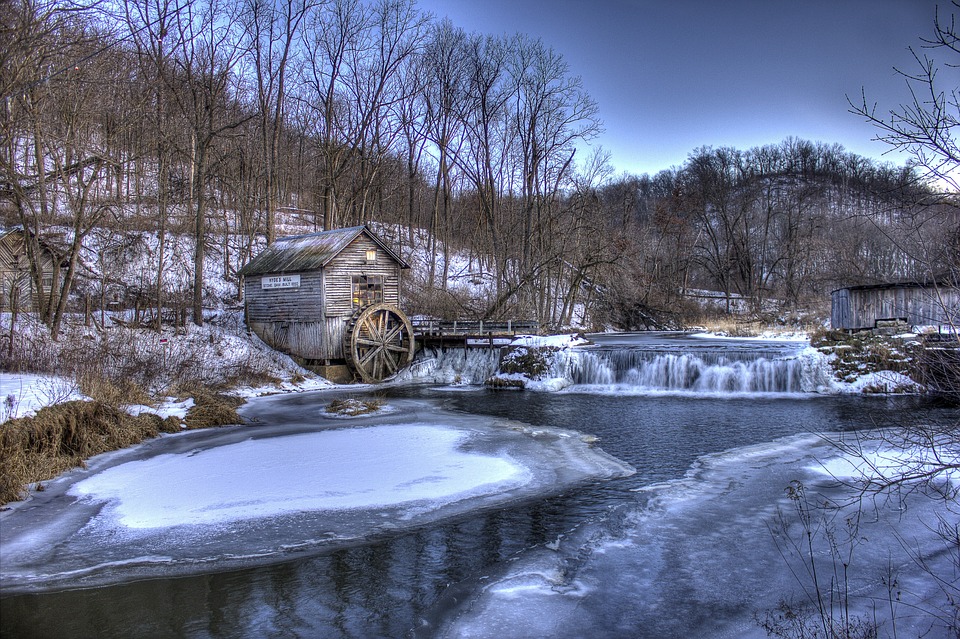
Why People Move to Wisconsin
Wisconsin attracts new residents due to its combination of high quality of life, affordable housing, developed infrastructure, and natural beauty. Here are the main reasons why people choose to move to Wisconsin:
Advantages of Moving to Wisconsin
- Affordable Housing:
The cost of renting and purchasing real estate in Wisconsin is lower than in many other states, particularly compared to the East and West Coasts. This makes the state attractive to families, young professionals, and retirees. - High-Quality Education:
Wisconsin is home to some of the best public universities, including the University of Wisconsin-Madison. Additionally, suburban schools have high ratings, making the state appealing to families with children. - Economic Stability:
The state offers a stable job market with low unemployment rates. Industries such as agriculture, manufacturing, healthcare, and IT provide a wide range of job opportunities. - Nature and Quality of Life:
With thousands of lakes, forests, and national parks, Wisconsin offers excellent opportunities for outdoor activities and a tranquil lifestyle. Residents appreciate the slower pace of life and the safety of most cities. - Welcoming Community:
Locals are known for their friendliness and willingness to help. This makes it easier for newcomers to integrate into the community. - Accessible Healthcare:
Wisconsin has one of the best healthcare systems in the country, offering high-quality care at reasonable prices.
Possible Disadvantages of Living in Wisconsin
- Climate:
Cold and snowy winters can be challenging for those accustomed to warmer climates. Temperatures in winter can drop to -20°C, and blizzards are not uncommon. - Taxes:
Despite affordable housing, property taxes in Wisconsin are among the highest in the U.S. The state also has moderately high income taxes. - Lack of Metropolises:
Those seeking the fast pace of metropolitan life may find Wisconsin too quiet, even in larger cities like Milwaukee. - Seasonal Employment:
For industries such as tourism and agriculture, employment can be seasonal. - Crime in Large Cities:
Certain areas of Milwaukee still experience higher crime rates, which can be a drawback for some families.
What Else to Know About Living in Wisconsin and for Newcomers
Wisconsin is a state with a unique atmosphere, traditions, and characteristics that everyone planning to live here should consider. One of the most notable features of the state is its title as “America’s Dairyland.” Locals take great pride in their cheese, which is an integral part of Wisconsin culture. Almost every restaurant offers dishes with cheese sauce, even if it’s not listed on the menu. An interesting fact: Wisconsin has a law that prohibits serving margarine in public places unless specifically requested.
Sports, especially American football, play a significant role in the life of the state. The Green Bay Packers are a true legend, and games at Lambeau Field stadium attract not only locals but also fans from around the world. Buying a ticket to a game can be a challenge, as season passes are often passed down through generations.
Alcohol culture in Wisconsin is fairly liberal. Alcoholic beverages are sold in supermarkets, and many bars have long-standing traditions. However, this is paired with strict traffic laws: driving under the influence is severely penalized with hefty fines and sometimes license revocation.
Fishing is one of the state’s unique traditions and is more than just a hobby for many residents. It’s a family activity passed down from generation to generation. A fishing license is required, but it’s easy to obtain online. Wisconsin is also known for its festivals dedicated to cheese and local produce. These events allow people to enjoy a variety of flavors and experience the warmth of the local community.
To live comfortably in Wisconsin, it’s essential to consider the climate. Winters here are snowy and cold, so it’s important to prepare in advance by investing in warm clothing and winter tires. Residents are accustomed to these conditions and even embrace them by organizing winter festivals and enjoying winter sports.
Another distinctive feature of Wisconsin is its focus on ecology. Local residents actively participate in community initiatives such as land cleanups, tree planting, and waste sorting. These efforts are supported by the government, helping to preserve the state’s natural beauty.
When moving to Wisconsin, be ready for a warm welcome. Locals are always willing to help and support newcomers. Participating in local events and fairs is a great way to integrate and familiarize yourself with the culture of this unique state.
Table of Contents